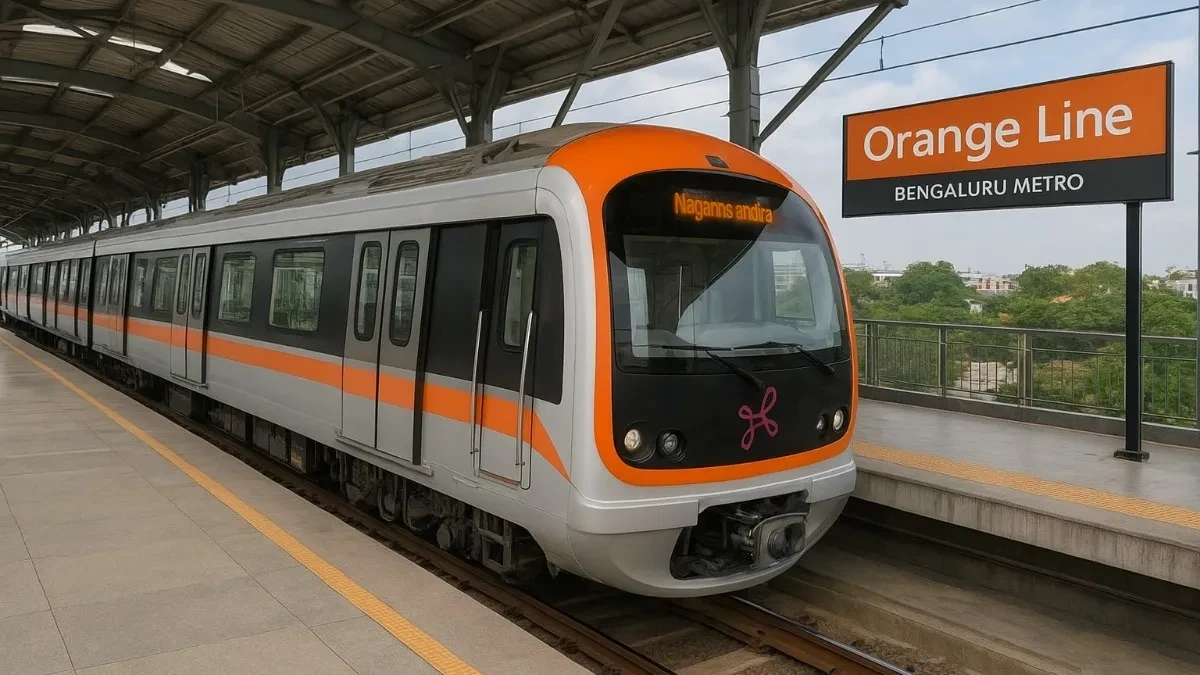In yet another blow to Bengaluru’s fast-disappearing green cover, the Bangalore Metro Rail Corporation Limited (BMRCL) has announced plans to cut and relocate 1,092 trees for its Phase III Orange Line project.
The move, though intended to boost connectivity, has sparked outrage among environmentalists and residents who fear the city’s air quality and livability are at stake.
The Namma metro Orange Line will span a total of 44.65 km, divided into two corridors: JP Nagar Phase 4 to Kempapura (32.15 km, 21 stations) and Hosahalli to Kadabagere (12.5 km, 9 stations). The ₹15,611-crore project is part of the city’s long-term metro expansion plan – but critics argue it’s coming at too high an ecological cost.
‘How Will We Breathe If All the Trees Are Gone?’
For many Bengalureans, the project’s benefits are overshadowed by concerns about the city’s vanishing tree cover. Local resident Inayat voiced what many feel:
“It’s a joy to have the metro in front of our house. But if all the trees are cut for this, how will we breathe? According to the rules, if one tree is cut, ten trees should be planted. The BMRCL officials should follow that.”
The city’s residents have already endured the consequences of aggressive urbanisation. Expanding roads, flyovers, and metro lines have led to the felling of thousands of trees over the years, worsening the city’s heat and pollution levels.
A History of Controversial Tree Felling
This isn’t the first time BMRCL has faced backlash over its handling of the city’s green heritage. Initially, the corporation had sought permission to remove 11,000 trees for the Orange Line. Following widespread protests, the number was reduced to 6,500-but even that decision failed to satisfy environmentalists.
Now, in the latest proposal, 2,183 trees are marked for cutting. The GBA Forest Department has granted approval to clear 1,092 trees in the first phase alone, with more expected to follow as construction progresses.
‘Show Us Where You Planted the Replacement Trees’
Environmental activist Arun has questioned BMRCL’s compliance with its own compensatory plantation rules.
“If one tree is cut, ten plants should be planted. So, where will you plant ten thousand trees instead of the one thousand you’re planning to cut? And where are the plants that were supposedly planted earlier?” he asked.
Activists argue that without accountability and transparency, such promises remain mere paperwork. The city, they warn, risks losing its ecological balance entirely.
A City on the Brink
Once known as India’s Garden City, Bengaluru now finds itself struggling to retain that identity. Studies already show a drastic fall in green cover, rising surface temperatures, and declining air quality.
If the BMRCL proceeds with large-scale tree felling without genuine replantation efforts, experts fear the city could soon resemble Delhi’s pollution crisis – choked, overheated, and stripped of its natural shade.
For now, the residents’ question remains unanswered: Will Bengaluru’s development always come at the cost of its lungs?
